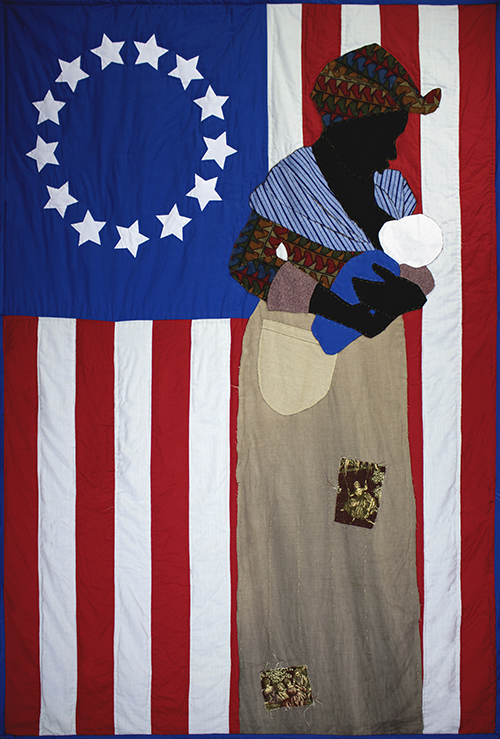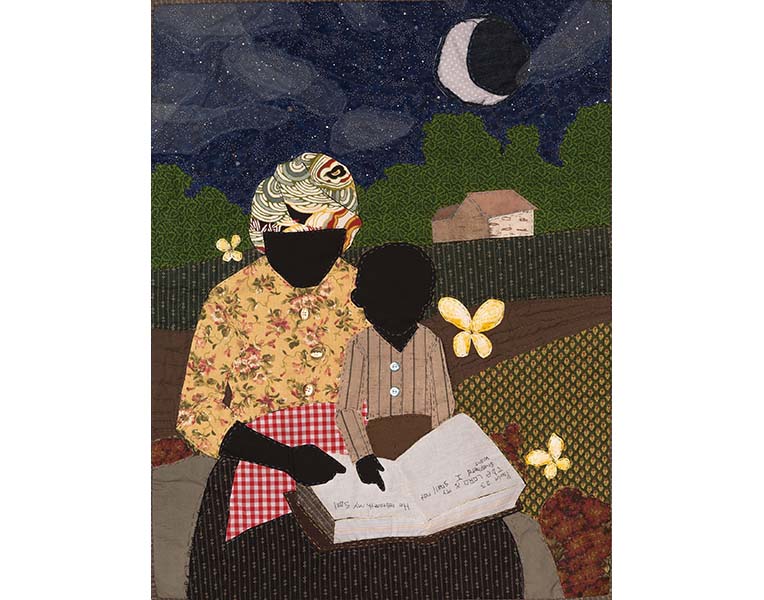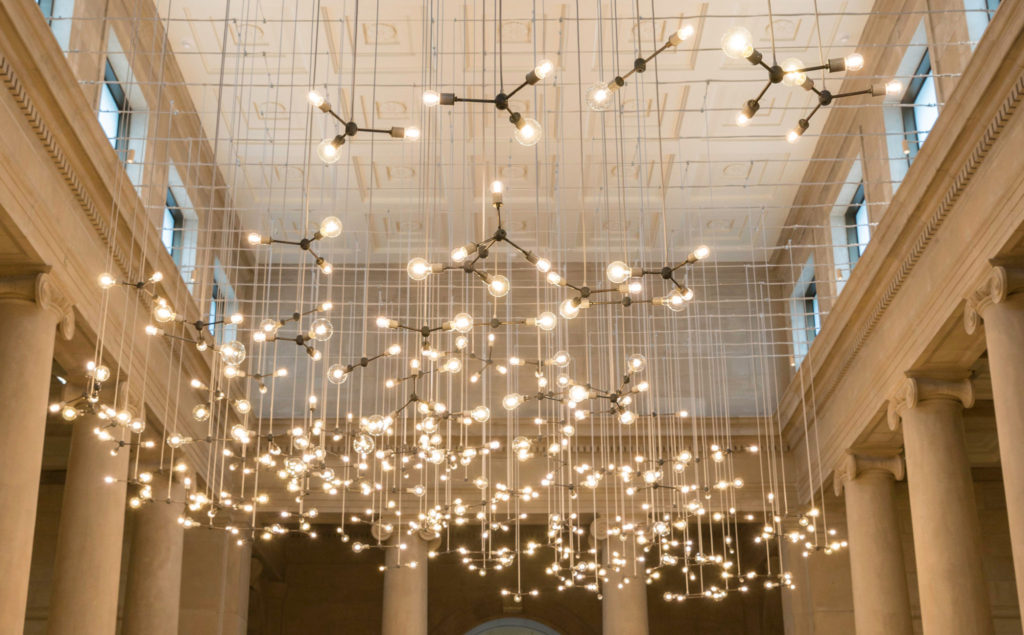Entering the Baltimore Museum of Art from the top of its signature steps, visitors will immediately be met with a stunning juxtaposition of old and new: the classic columned architecture of the Fox Court, illuminated by more than 400 incandescent-look lightbulbs in the form of Spencer Finch’s “Moon Dust (Apollo 17).”
The installation, which opened to the public in late February, is “an abstract sculpture comprised of 417 LED light bulbs that together represent the molecular structure of the moon dust gathered from NASA’s 1972 space mission.” Though the light sculpture stuns more for its aesthetics than its accuracy, looking closely at its structure is a bit reminiscent of high school chemistry—just much, much more beautiful.
“The piece represents man’s mind, ambition, and will to create and study,” said senior curator of contemporary art Kristen Hileman at a press event for the piece, “but also his interest in beauty, rationality and order.”
“Moon Dust” will be on view at the BMA for the next seven years courtesy of Baltimore couple Joanne Gold and Andrew Stern, who own the piece. It is exhibited in memory of Gold’s mother, Lenore E. Gold
 Exiting Fox Court to the left brings visitors directly into the BMA’s newest (and the artist’s debut) exhibition, “Stephen Towns: Rumination and Reckoning.” This collection, too, has a fascination with the celestial—but rather than engaging with it through scientific study, Towns’ work explores spirituality and history.
Exiting Fox Court to the left brings visitors directly into the BMA’s newest (and the artist’s debut) exhibition, “Stephen Towns: Rumination and Reckoning.” This collection, too, has a fascination with the celestial—but rather than engaging with it through scientific study, Towns’ work explores spirituality and history.
A painter in training, Towns was first overcome with the urge to create quilts about six years ago. The piece in his head, he said, demanded the “maternal” and physically demanding work of quilting and its associated history. Thus his first piece was born: “Birth of a Nation,” a full-size quilt depicting what he calls a “Mammy figure” breastfeeding a white child in front of a previous iteration of the American flag.
The piece ignited his interest in the medium, furthered by a growing interest in the history and experiences of American slaves. His focus shifted to Nat Turner, a former slave who led a bloody rebellion in the pre-Civil War era. Through seven quilts (called “Story Quilts”), Towns chronicles Turner’s life from childhood to his violent death.
Each quilt features faceless figures and a stunning sky, the latter of which reflects Turner’s fascination with the sun, moon and stars. (In fact, Towns says that Turner was inspired to incite rebellion by a total solar eclipse, which he felt was a sign from God.)
The quilts are gorgeous and wildly evocative, a fact made even more incredible by the fact that Towns self-taught using YouTube videos. But they also noticeably lack the violence that characterized the rebellion and the end of Turner’s life.
 “Young people would tell me ‘I don’t go to see slave movies anymore,’” Towns says. “I realized that by not portraying violent stories through violent images, people can at least learn about them.”
“Young people would tell me ‘I don’t go to see slave movies anymore,’” Towns says. “I realized that by not portraying violent stories through violent images, people can at least learn about them.”
The luminous elements of the quilts, like shiny tulle, glass beads and metallic threads, serve a similar purpose.
“People are drawn to sparkly, beautiful things,” he says—and that makes it harder to turn away.





